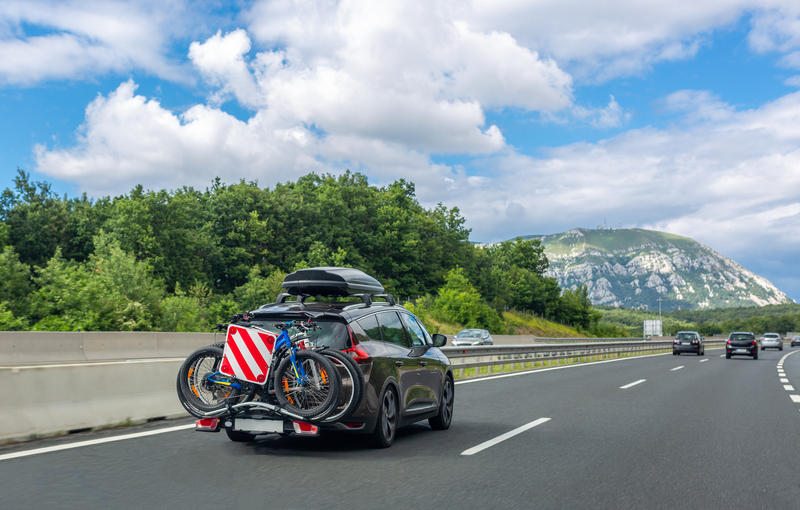Versatile rack options expand vehicle cargo room

Anyone who transports gear during winter knows the frustrations and inconveniences of traveling during inclement weather. Wet shoes, muddy skis, damp clothes—nothing you would want to invite inside your clean vehicle.
“There are lots of great options for stowing winter gear and accessories,” said John Bauer, founder of Rack N Road in Sacramento, Calif. “You can protect that luggage from the elements and keep your vehicle cabin clean.”
What’s the best way to carry equipment outside your vehicle?
Bauer’s answer: It depends on the weather you expect to encounter, what you are carrying and what kind of vehicle you drive.
For instance, rainy or snowy conditions can damage exposed gear. Small rust stains may appear on metal surfaces of ski equipment attached to roof racks. Open ended carriers are not suited for carrying personal items.
“Drivers should consider using a clamshell container if they expect to encounter bad weather conditions,” Bauer said.
According to Bauer, just about any vehicle can be retrofitted for carrying gear. Vehicles with a tow hitch can be retrofitted for carry snowboards and skis.
Or, temporary roof racks may be installed on most vehicles. Once secured to the door jam or roof rails, drivers can attach winter gear directly to the rack or inside a clamshell carrier.
“Temporary racks and hitch-mounted racks may be removed easily and do not require any alternation of the roof itself,” Bauer explained. “One note of caution: rack loads my shift if the driver makes sudden maneuvers or if there are heavy gusts of wind.”
Permanent racks offer the safest way to carry winter gear, Bauer said. If the vehicle has the lengthwise rack rails, crossbars must be added to complete the system so you can attach cargo carriers or equipment clamps.
Vehicles without factory-installed rack systems require permanent installation of rails and crossbars. According to Bauer, the latest racks fit as snugly as factory-installed equipment without harming the integrity of the vehicle roof.
Here are Bauer’s suggestions for winter travelers looking to clear out their vehicle cabin by stowing gear and accessories outside the vehicle:
-Consider what you want to carry. Just skis? Skis, snowboards and snowshoes and other accessories such as boots or clothes? A clamshell enclosure protects gear from theft and the elements.
-How much do you want to spend? Tow hitch accessories and temporary roof racks are the least expensive methods of transporting winter gear. They also offer less security and stability than permanently attached roof racks. For instance, gear attached to hitch-mounted racks may flutter and accumulate road grime.
-Look for carriers or cargo boxes with sturdy locks and heavy duty plastic. Stainless steel parts are less likely to rust or break than plastic components. ABS plastic lasts longer and weathers better than cheap polyethylene plastic.
-Review the aerodynamics as well as design to make sure it blends with your vehicle and minimizes wind resistance.
-Point ski tips toward the rear of the vehicle to reduce air resistance and chatter.
-Ask about permanent racks and look for an experienced installer that guarantees installation quality. Proper installation fits as snugly as a factory-installed rack and provides many options not available on temporary or hitch mounted racks.
“Permanent racks and carriers can be used for summer as well as winter gear,” Bauer said. “Consider all your options and requirements before making an investment. Quality installation and equipment will last the lifetime of your vehicle.”